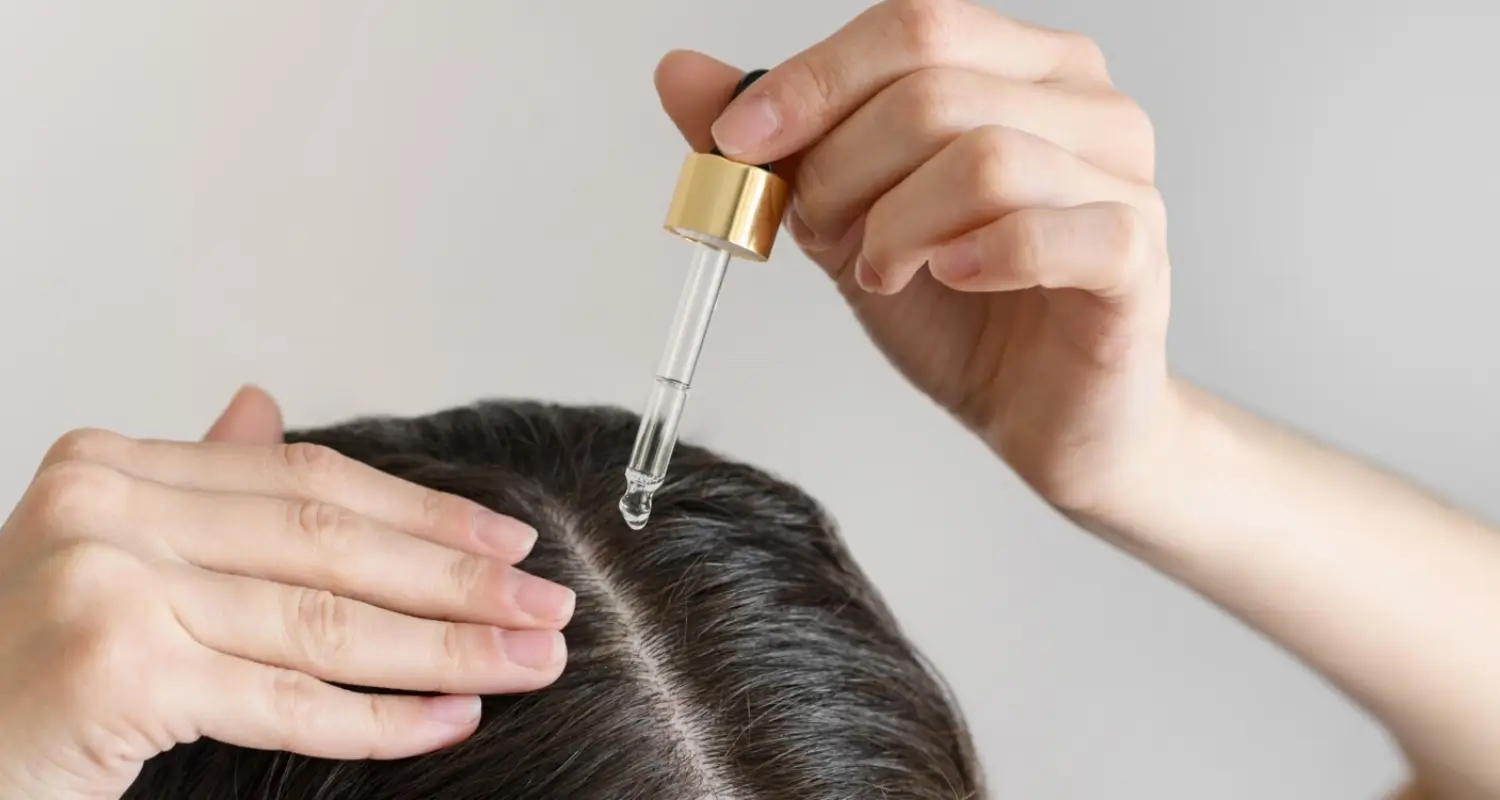How Do You Know if Your Hair Needs a Protein Treatment?

Embarking on a hair care journey often involves a myriad of products and practices, each promising to bestow upon us the luscious locks we so dearly covet. Amidst this plethora, protein treatments for hair emerge as a beacon of hope for many, particularly those grappling with damage and brittleness. As a passionate advocate for hair health, I have come to appreciate the transformative power of protein treatments and the vitality they can restore to one’s tresses.
Protein treatments are not merely a trend but a cornerstone of hair rehabilitation. Our hair is fundamentally composed of proteins, primarily keratin, which provides its structure and strength. When this protein is depleted due to environmental stressors, heat styling, or chemical processes, our hair can become weak and susceptible to breakage. This is where protein treatments step in, replenishing lost protein and fortifying the hair shaft.
In this article, I wish to unravel the mysteries surrounding protein treatments for hair. I will guide you through the signs that herald the need for a protein boost, the various treatments available, and the ways to maintain your mane post-treatment. Let us delve into the world of hair protein treatments and discover if your tresses are in dire need of this restorative elixir.
Understanding the Role of Protein in Hair Health
The Building Blocks of Hair
To truly grasp what a protein treatment for hair is, one must first understand the role of protein in hair health. Our hair fibers consist of up to 95% keratin, a type of protein that forms the building blocks of the hair. It imparts both resilience and elasticity, allowing our hair to withstand the daily wear and tear it encounters. Proteins bind to the hair cuticle and help seal the shaft, thus protecting it against damage.
Why Hair Loses Protein
Various factors contribute to the depletion of protein in our hair. Chemical treatments such as coloring, perming, or straightening break down the protein bonds within the hair. Similarly, thermal styling tools can sap the moisture and protein from our strands. Even environmental aggressors like the sun’s UV rays or chlorinated water can impair the protein integrity of the hair.
The Consequences of Protein Deficiency
When hair loses protein, it becomes weak and vulnerable. It lacks the strength to bounce back from styling and manipulation, leading to breakage and split ends. Hair may also appear lifeless, dull, and lackluster. In essence, protein deficiency takes a toll not only on the appearance of your hair but also on its very structure and health.
Signs That Your Hair May Need a Protein Treatment
Tell-tale Symptoms of Protein-Deprived Hair
Identifying when your hair is crying out for a protein treatment can be a challenge. However, certain symptoms serve as tell-tale indicators. If your hair has lost its elasticity, it may not return to its natural shape after being stretched. This lack of bounce is a clear sign that your hair needs protein. Additionally, if your hair is excessively breaking or if the ends are splitting despite regular trims, it’s time to consider a protein intervention.
The Strand Test
A simple method to determine your hair’s protein needs is the strand test. Take a single hair between your fingers and gently pull. If it stretches slightly and returns to its original length, your protein-moisture balance is likely in good standing. If it stretches excessively and then breaks, or if it snaps immediately without stretching, your hair is in desperate need of protein.
The Porosity Factor
Porosity refers to your hair’s ability to absorb and retain moisture. Highly porous hair often requires more protein as it tends to absorb too much water, which can lead to swelling and further damage. If your hair dries quickly after washing or absorbs products too rapidly, it may be high in porosity and in need of a protein boost to regulate its moisture intake.
Different Types of Protein Treatments for Hair
Reconstructors, Light Protein Treatments, and Deep Conditioners
Protein treatments are not one-size-fits-all. Reconstructors are potent protein treatments designed for severely damaged hair, containing a high concentration of protein to repair and strengthen. Light protein treatments, on the other hand, are suitable for regular maintenance and can be used more frequently. Deep conditioning treatments often combine protein with moisturizing ingredients to address both protein and moisture needs.
Animal vs. Vegetable Proteins
Protein treatments can also be differentiated by their source. Animal proteins, such as keratin or silk amino acids, closely mimic the protein found in human hair, offering a more direct replenishment. Vegetable proteins derived from ingredients like soy or wheat are lighter options that can be beneficial for finer hair types that may be weighed down by heavier animal proteins.
Hydrolyzed Proteins and Their Benefits
Hydrolyzed proteins have been broken down into smaller fragments, allowing them to penetrate the hair shaft more effectively. They are a common ingredient in many protein treatments and can significantly improve the hair’s feel and strength. Hydrolyzed wheat, soy, and keratin proteins are among the most popular and can be found in a variety of hair care products.
How to Choose the Right Protein Treatment for Your Hair Type
Assessing Your Hair’s Needs
Choosing the right protein treatment hinges on a thorough assessment of your hair’s current state and needs. If your hair is moderately damaged or you’re looking to prevent damage, a light protein treatment or a balanced protein-moisture deep conditioner may suffice. For severely distressed hair, a potent reconstructor could be the best course of action.
Considering Hair Porosity and Density
It’s essential to consider your hair’s porosity and density when selecting a protein treatment. Those with high-porosity or dense, coarse hair may benefit from heavier treatments that can penetrate deeply and provide substantial reinforcement. Individuals with low-porosity or fine hair might opt for lighter, more frequent treatments to avoid protein overload.
Reading Labels and Understanding Ingredients
When selecting a protein treatment, pay careful attention to product labels and ingredient lists. Look for treatments that contain hydrolyzed proteins, which can effectively fortify the hair. Avoid treatments with excessive fillers or harsh chemicals that may counteract the benefits of the proteins. Always seek out products that align with your hair’s specific needs and characteristics.
Steps to Perform a Protein Treatment at Home
Preparing Your Hair for Treatment
Before applying a protein treatment, ensure that your hair is clean and free from buildup. Use a gentle clarifying shampoo to remove any residues that might prevent the proteins from adhering to the hair shaft. Towel-dry your hair lightly to remove excess moisture, as applying protein treatments to damp hair can enhance absorption.
Applying the Protein Treatment
Apply the protein treatment evenly throughout your hair, section by section, to ensure thorough coverage. Use a wide-tooth comb to distribute the product from roots to ends, being careful not to tug or pull on your strands. Once applied, you can cover your hair with a shower cap to create a warm environment that can help the proteins penetrate more deeply.
Timing and Rinsing
Follow the instructions provided with your protein treatment regarding timing, as leaving the treatment on for too long can lead to stiffness and brittleness. Once the recommended time has elapsed, rinse your hair thoroughly with lukewarm water. It’s crucial to remove all traces of the treatment to avoid any residue that could make the hair feel heavy or coated.
Professional Protein Treatments at Salons
The Advantages of Salon Treatments
Professional protein treatments at salons offer a higher level of expertise and often utilize more concentrated formulas than at-home versions. A licensed stylist can assess your hair’s condition and select the most appropriate treatment. Additionally, they can apply heat or use specific techniques to enhance the efficacy of the protein treatment.
The In-Salon Experience
When opting for a salon protein treatment, you can expect a comprehensive service that includes a consultation, washing, protein application, and often a blow-dry or style. Some salons also offer supplementary services such as a scalp massage or a final sealing treatment to lock in the protein.
Maintaining Salon Results
To maintain the results of a salon protein treatment, follow your stylist’s recommendations for at-home care. They may suggest using specific shampoos, conditioners, or leave-in treatments to prolong the benefits of the treatment. It’s also important to schedule follow-up treatments at intervals suggested by your stylist to keep your hair in optimal condition.
Common Mistakes to Avoid When Using Protein Treatments
Over-Proteinizing Your Hair
One of the most common mistakes is overloading your hair with protein, which can lead to stiffness, brittleness, and breakage. Be mindful of how often you use protein treatments and watch for signs of protein overload, such as hair that feels dry and straw-like.
Neglecting the Moisture Balance
While protein is crucial for hair strength, maintaining a balance between protein and moisture is equally important. Overemphasis on protein without adequate moisture can leave hair rigid and prone to snapping. Always follow a protein treatment with a hydrating conditioner or mask to restore moisture balance.
Using Protein Treatments on Healthy Hair
If your hair is already healthy and showing no signs of protein deficiency, a protein treatment may be unnecessary. Using protein treatments on hair that doesn’t need them can cause an imbalance and lead to issues. Assess your hair’s condition regularly to determine if a protein treatment is warranted.
Maintaining Hair Health After a Protein Treatment
Incorporating a Balanced Hair Care Routine
After a protein treatment, it’s essential to maintain a balanced hair care routine that addresses both protein and moisture needs. Alternate between protein-based products and moisture-rich conditioners to ensure your hair remains resilient and supple. Regular trims can also help keep your ends healthy and prevent split ends from traveling up the hair shaft.
Protecting Your Hair from Further Damage
Post-treatment, take measures to protect your hair from further damage. Minimize the use of heat styling tools and, when necessary, use a heat-protectant spray. Be gentle when detangling and styling, and consider wearing protective hairstyles to shield your hair from environmental stressors.
Monitoring Your Hair’s Response
Keep a close eye on how your hair responds after a protein treatment. If you notice improvements in strength and elasticity, you’ve likely found the right balance. Should any negative changes occur, reassess your treatment plan and consult with a professional if needed to tailor your approach to your hair’s evolving needs.
Conclusion and Final Thoughts on Protein Treatments for Hair
As we reach the conclusion of our exploration into protein treatments for hair, it’s clear that they can be a powerful ally in the quest for healthy, resilient tresses. Whether you choose to perform a protein treatment at home or seek out the expertise of a salon professional, understanding the role of protein in hair health and recognizing the signs of protein depletion are paramount.
Protein treatments are not a universal remedy but a targeted solution for those experiencing specific symptoms of damage and fragility. By choosing the right treatment for your hair type, avoiding common pitfalls, and maintaining a balanced hair care regimen, you can enjoy the myriad benefits that protein treatments have to offer.
Remember, hair care is a personal journey, and what works for one may not work for another. Listen to your hair, be attuned to its needs, and don’t hesitate to adjust your approach as those needs change. With the right care and attention, your hair can thrive, reflecting the inner health and beauty that lies within. YesTablets


